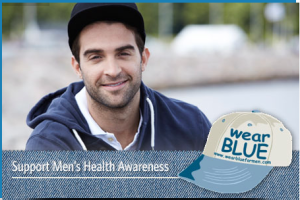Breast cancer is the second most common cancer in women, after skin cancer. According to the American Cancer Society, 231,000 Americans will be diagnosed with invasive breast cancer, 60,000 with non-invasive, and 40,000 are expected to die
October is designated to bring awareness to breast cancer so women can be informed of early detection and getting the proper treatments. It’s also a good time to inform women of healthy habits they need to implement into their daily lives to lower their risk of breast cancer. The more common risk factors associated with breast cancer are: age, genetics, and being a women. These factors can’t be changed, but risk factors such as being overweight, lack of exercise, smoking, unhealthy diet, can be changed. Here’s what you can do to lower your risk of breast cancer:
Lower Intake of Unhealthy Foods
Doing this will not only lower your risk for breast cancer, but it will make a difference in your overall health! According to BreastCancer.org, diet is partly responsible for about 30% to 40% of all cancers. No food or diet can prevent you from getting breast cancer. But some foods can make your body the healthiest it can be, boost your immune system, and help keep your risk for breast cancer as low as possible.
Lose Those Extra Pounds
A study published in the journal BMJ Open found women who went up a skirt size every decade between their 20s and 60s, increased their risk by 33 percent compared to the 77 percent risk for those who increased two sizes per decade. You can seek counsel from your healthcare provider to help you get your health on the right track.
Add Exercise to Your Daily Routine
Research has shown that exercising 4 to 7 hours a week can lower your risk of breast cancer. People who exercise regularly tend to be healthier and have a lower body fat percentage. According to BreastCancer.org, fat cells make estrogen and extra fat makes extra estrogen. When breast cells are exposed to estrogen over time, the risk of developing breast cancer is high.
Stop Smoking
This bad habit is linked to a number of cancers and diseases. Smoking is linked to a higher risk of breast cancer in young premenopausal women. There is also a link between very heavy secondhand smoke exposure and breast cancer risk in postmenopausal women. Smoking can be hard to to quit cold turkey, but there are programs that can help you. Talk with your doctor about what program will work best for you, or visit the American Lung Association for information on a free online smoking cessation program.
“By choosing the healthiest lifestyle options possible, you can empower yourself and make sure your breast cancer risk is as low as possible.” – BreastCancer.org
Improvements in detection, treatment, and awareness have increased over the past few years. Because of this, women who are diagnosed with breast cancer are living more. Nevertheless, it’s still important to stay as healthy as possible to lower your chance of breast cancer. Before making any significant changes to your lifestyle, consult with your physician. Don’t have a doctor? Contact us today and we can get you set up with an in-network provider to meet your needs.

 o improve health. In our opinion it’s just an excuse to celebrate the best meal of the day! Better Breakfast Month is celebrated on September 23, but we’ll be celebrating all month long with new recipes and ideas to spice up the start of your day.
o improve health. In our opinion it’s just an excuse to celebrate the best meal of the day! Better Breakfast Month is celebrated on September 23, but we’ll be celebrating all month long with new recipes and ideas to spice up the start of your day. n.
n.








 ear BLUE Day” here in the office. On Monday, June 15, everyone in our office will be decked out in blue! We encourage all of our clients and friends to do the same. Wear BLUE was created by Men’s Health Network to raise awareness about the importance of male health and to encourage men to live longer and healthier lives. It’s an easy way to show your support for a great cause.
ear BLUE Day” here in the office. On Monday, June 15, everyone in our office will be decked out in blue! We encourage all of our clients and friends to do the same. Wear BLUE was created by Men’s Health Network to raise awareness about the importance of male health and to encourage men to live longer and healthier lives. It’s an easy way to show your support for a great cause.